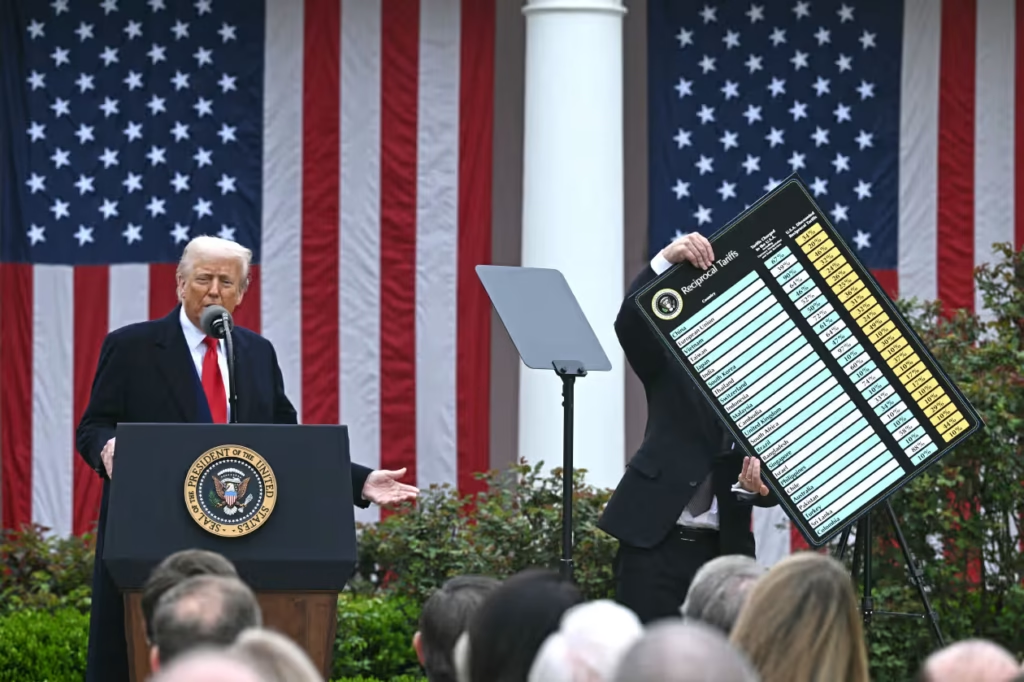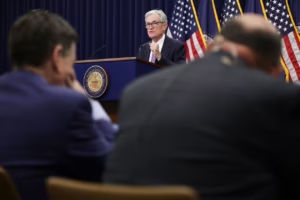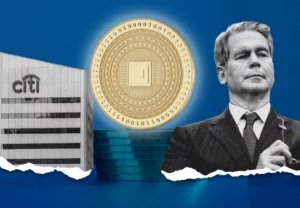With three weeks to go before the possible return of the Trump administration’s “reciprocal” tariffs that hammered markets in April, the chief economist for Goldman Sachs, Jan Hatzius, is predicting those elevated import taxes won’t actually come back.
Hatzius said Wednesday that he and his colleagues are “not building in the second stage of the ‘reciprocal’ tariffs,” noting that those levies have been subject to a pause that’s due to end July 9.
“We expect that to continue to be pushed out,” Hatzius said, referring to more time for negotiations with U.S. trading partners, rather than the White House sticking to the July 9 deadline. His remarks came during an event run by the American Enterprise Institute, a conservative think tank.
Most U.S. trading partners have been facing the July deadline to make trade deals with the Trump administration in order to avoid the reimposition of the tariffs that President Donald Trump unveiled on April 2. Those “liberation day” levies – such as a 24% duty for Japan – took effect on April 9 but were mostly paused within about 15 hours. During the pause of 90 days, most trading partners instead have been facing a baseline tariff rate of 10%.
Goldman’s Hatzius said his team estimates that the overall U.S. tariff rate has increased at the moment by about 10 percentage points this year.
“We’re expecting approximately another 4 to 5 percentage points to come from the 25% sectoral tariffs on things like semiconductors, communications equipment, pharma, copper and probably a few other things. That’s the big additional tariff increase that we’re still building in,” he said.
A number of sectors are widely expected to get hit with new tariffs, as the required investigations for such levies have been under way for weeks or months.
Besides not expecting a return of the elevated tariffs, Hatzius said his team also isn’t expecting a change in the current duty on Chinese goods, which has increased by 30 percentage points this year. Goldman’s economists don’t anticipate renewed escalation in U.S.-China trade tensions, but they also don’t think Beijing will manage to persuade the White House to reduce its tariffs, he noted.
“Obviously there’s significant risk around all of these individual assumptions, but more broadly, I’d be surprised if we were very far away from this kind of 13-, 14-, 15-percentage-point increase,” Hatzius said, referring to the current increase of 10 points plus an additional rise from sector-based tariffs.
The reimposition of “reciprocal” tariffs is expected to affect most foreign countries but not China, Canada, Mexico and the U.K., as those nations have been in separate trade negotiations with the Trump administration.
Investors have been watching for signs of progress on trade issues, such as a de-escalation in tariffs and other barriers.
Trump’s “liberation day” tariffs were blamed for a historic market selloff, but stocks rallied once the levies were mostly paused. The S&P 500 stock index SPX is up about 2% for the year to date, though it’s holding below an all-time high reached in February.
While the Trump administration has described its April 2 tariffs as “reciprocal” duties, they aren’t actually based on the levies that other countries place on U.S. products, but instead stem from a very simple formula.
Last week, U.S. Treasury Secretary Scott Bessent talked about giving more time for negotiations with trading partners as the July 9 deadline nears.
“It is my belief that countries that are negotiating in good faith could be rolled forward,” Bessent said while testifying before a Senate subcommittee.





